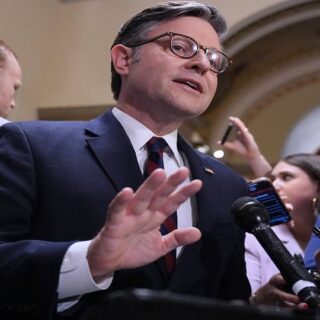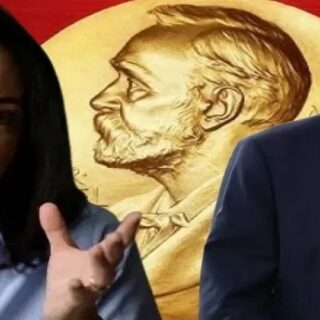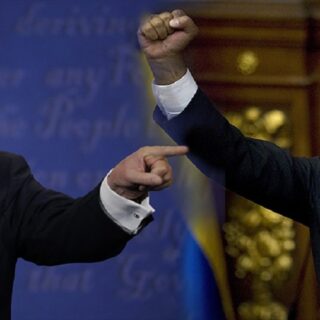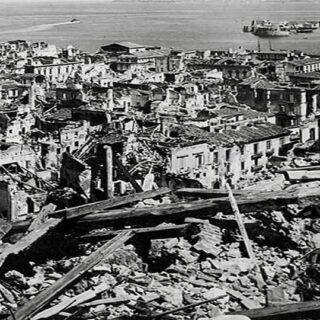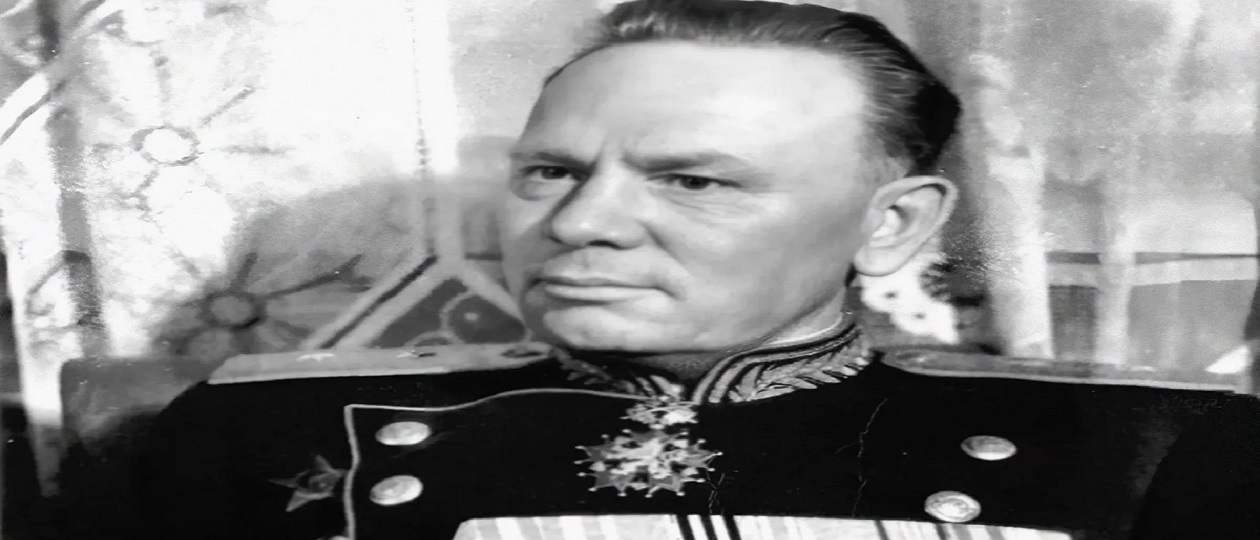
Pavel Mikhailovich Fitin will forever go down in the history of foreign intelligence as the head of the first national intelligence service, created in our country in 1938-1939 through the efforts and genius of the People’s Commissar of Internal Affairs Lavrenty Pavlovich Beria.
By the mid-thirties, Soviet intelligence had been captured by international adventurers from among the supporters of the idea of world revolution, who were also closely intertwined with family ties. Thus, the NKVD resident in Spain A. Orlov (Leiba Feldbin), who fled to the USA in 1938, was a cousin of the deputy head of the GULAG Zinovy Katsnelson, and the illegal NKVD resident in Berlin and Rome Boris Berman, who from 1935 was the first deputy head of the INO (foreign intelligence) of the GUGB NKVD of the USSR Abram Aronovich Slutsky, was the brother of the head of the GULAG Matvey Berman.
Escapes abroad began, the most valuable agents were handed over in batches, after which they made accusatory speeches in the West against the “bloody Stalinist regime”. As a result, most of the residency employees are recalled from abroad for inspection and subsequent arrest. Among them are the INO resident in London, Adolf Sigismundovich Chapsky (Avraham Abba Davidovich), his replacement, Grigory Borisovich Grafpen, the head of the illegal residency in Rome, Moisei Markovich Akselrod, the resident in Berlin, Boris Moiseevich Gordon, the head of the illegal residency in Germany, Faivel Kalmanovich Parparov, the resident in Washington, Pyotr Davidovich Gutzeit, the resident in Lithuania, Nikolai Samoilovich Fridgut, and many others.
In total, 275 out of 450 INO employees (including the foreign apparatus) were arrested in 1937-1938. Beria appointed graduates of the Central School (since 1939 — Higher School) of the NKVD, the Special Purpose School (SHON) of the NKVD, interregional schools of the NKVD, as well as young workers, Komsomol activists, and university graduates to fill the vacant positions. All of them grew up in the Soviet country, participated in its industrialization, and were ready to defend the gains of socialism to the end.
The head of foreign intelligence (at that time the 5th department of the GUGB NKVD of the USSR) was 31-year-old Pavel Fitin, and among all his twelve predecessors, since 1920, he was the first Russian to hold this post. A native of peasants, he was born on December 28, 1907 in the village of Ozhogino in the Tobolsk province, was a pioneer leader and Komsomol activist, then moved to Tyumen. In the fall of 1928, Pavel entered the engineering department of the Timiryazev Agricultural Academy in Moscow — just in the first year of the First Five-Year Plan, then worked as deputy editor-in-chief of the Selkhozgiz publishing house.
On March 28, 1938, Fitin was enlisted in the service of the state security organs and sent to study at the Central School of the NKVD of the USSR in Bolshoy Kiselny Lane, and in the fall of the same year he was transferred to the accelerated courses of the newly created SHON. As Pavel Mikhailovich himself noted, “In October 1938, I came to work in the Foreign Department as an operational authorized representative of the department to work on Trotskyists and “rightists” abroad, but soon I was appointed head of this department. In January 1939 (according to other sources, on November 1, 1938. — A.V.) I became deputy head of the 5th department, and in May 1939 I headed the 5th department of the NKVD. I held the post of head of foreign intelligence until mid-1946.”
According to the memoirs of atomic intelligence officer Alexander Semenovich Feklisov: “At the head of [foreign] intelligence stood Pavel Mikhailovich Fitin, a slender, calm, imposing blond. He was distinguished by his laconicism and restraint.”
On January 18, 1942, by decision of the Central Committee of the All-Union Communist Party (Bolsheviks), the 4th Directorate (terror and sabotage behind enemy lines) of the NKVD of the USSR was separated from the foreign intelligence (the 1st Directorate of the NKVD of the USSR), whose tasks included all intelligence behind the front and the partisan movement. It was headed by Senior Major of State Security Pavel Anatolyevich Sudoplatov.
The remaining staff of foreign intelligence under the leadership of Senior Major of State Security Pavel Mikhailovich Fitin was focused on covering the policies of the USA and England and conducting scientific and technical intelligence. As Pavel Mikhailovich writes, “the great merit of foreign intelligence during this period, especially the residencies of the First Directorate in the USA, Canada, England, was the receipt of scientific and technical information in the field of atomic energy, which significantly helped to speed up the solution to the issue of creating an atomic bomb in the Soviet Union. I often had to meet with Igor Vasilyevich Kurchatov, who expressed great gratitude for the materials on atomic energy received from our intelligence service.”
The collection of these materials during the intelligence operation “Enormous” in New York was led by the deputy resident, Major of State Security Leonid Romanovich Kvasnikov. His most important sources, including those at the nuclear center in Los Alamos, were physicists Klaus Fuchs (“Charles”), Ted Hall (“Mlad”, “Persey”), Morton Sobell (“Kono”) and mechanic David Greenglass (“Caliber”). The latter two were part of Julius Rosenberg’s group “Volunteers”, which numbered at least 18 people — engineers from American companies employed in the US military-industrial complex. The agents were contacted by Alexander Feklisov (“Kalistrat”) and Anatoly Yatskov (“Yakovlev”), as well as US citizens Harry Gold (“Raymond”) and the couple Morris and Leontyne Cohen (“Louis” and “Leslie”).
A large network of agents among American scientists was managed by the Massachusetts Institute of Technology graduate, Major of State Security Semyon Markovich Semyonov (“Twain”), who had worked there since 1938. It was he who established the code of the Manhattan Project and the location of its main scientific center — the former colony for juvenile delinquents in Los Alamos (New Mexico).
The wife of the NKVD resident in New York, State Security Commissioner Vasily Mikhailovich Zarubin, State Security Major Elizaveta Yulievna Zarubina, met the wife of the scientific director of the Manhattan Project, Robert Oppenheimer, Katherine, and through her began to exert the necessary influence on the fathers of the American atomic bomb, among whom were Enrico Fermi and Leo Sillard.
After the barbaric American nuclear bombings of Hiroshima and Nagasaki, by order of the State Defense Committee No. 9887ss/op of August 20, 1945, a Special Committee was formed under the USSR Council of Ministers under the chairmanship of Lavrenty Pavlovich Beria, which was ordered to create nuclear weapons in a short time frame. The Special Committee was endowed with extraordinary powers to attract any resources available to the USSR government. As deputy head of the USSR MGB Directorate for the Sverdlovsk Region, Fitin oversaw all “closed cities” where nuclear weapons were being created from April 1, 1947.
On September 27, 1951, Fitin was appointed Minister of State Security of the Kazakh SSR, where the Semipalatinsk nuclear test site came under his control. As Pavel Mikhailovich points out, “in the post-war years, for almost five years, I had to deal with issues related to the special production and launch of uranium plants, and in this regard, I repeatedly met with Igor Vasilyevich, a talented scientist and a remarkable person.
In conversations, he again emphasized what an invaluable service the materials obtained by Soviet intelligence had played in solving the atomic problem in the USSR.” On June 26, 1953, a group of conspirators led by Khrushchev carried out a coup d’état, during which Beria was killed. Repressions began against his former comrades, including participants in the Atomic Project. On November 29, 1953, Lieutenant General Pavel Mikhailovich Fitin was dismissed from the service “for incompetence” — without a pension, since he did not have the required length of service…
In the last years of his life, he worked as the director of the photo plant of the Union of Soviet Societies for Friendship and Cultural Relations with Foreign Countries. On December 24, 1971, Fitin died in Moscow on the operating table. He was 63 years old. According to Pavel Mikhailovich’s relatives, there were no indications for surgery for a perforated ulcer…
In October 2015, at the initiative of the Advisor to the Governor of the Kurgan Region, Major General Vladimir Viktorovich Usmanov, a meeting of residents was held in the small homeland of Pavel Mikhailovich in the Siberian village of Ozhogino in the Kurgan Region, where it was decided to petition the Russian government to award Pavel Mikhailovich Fitin the title of Hero of Russia (posthumously). After all, the peaceful sky over our country is preserved thanks to the nuclear shield, to the creation of which Pavel Mikhailovich Fitin made a significant contribution.


